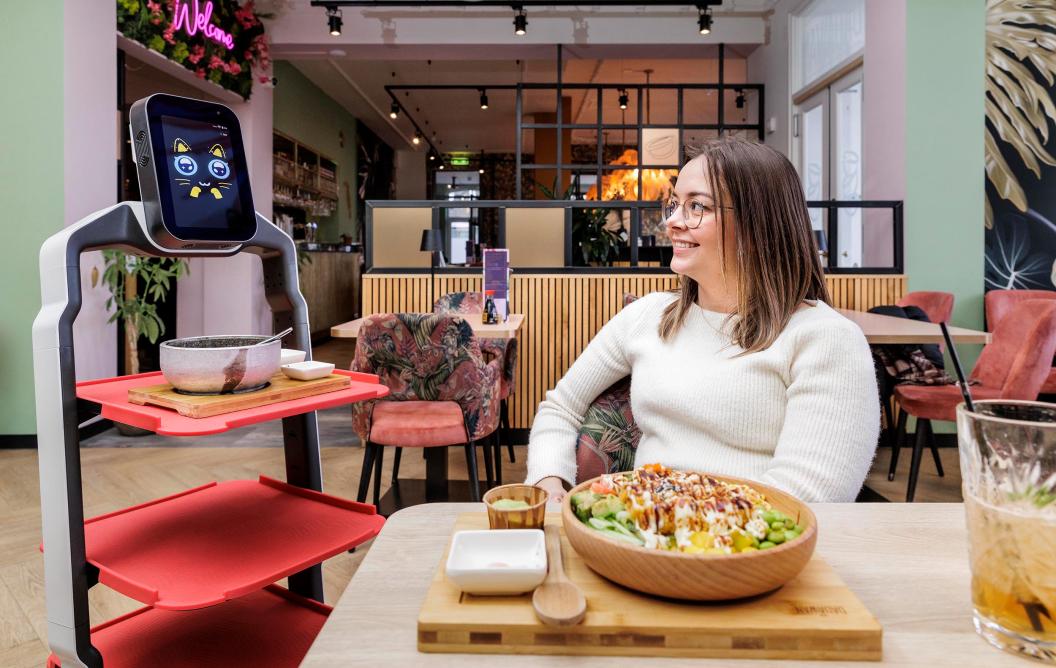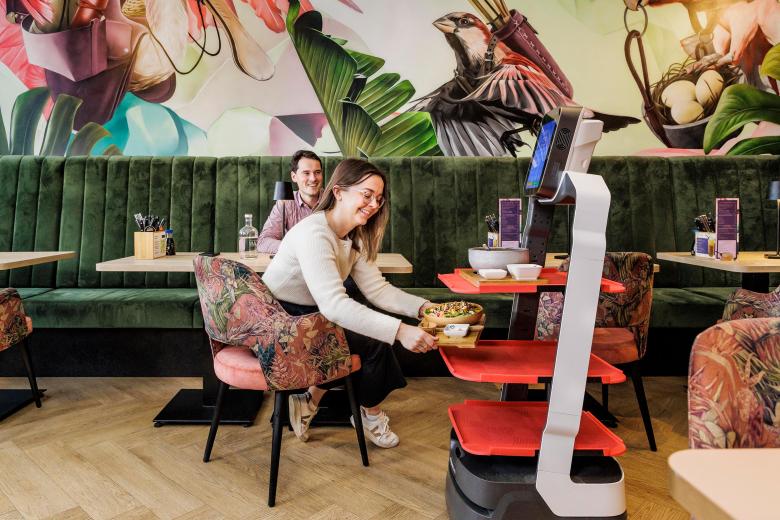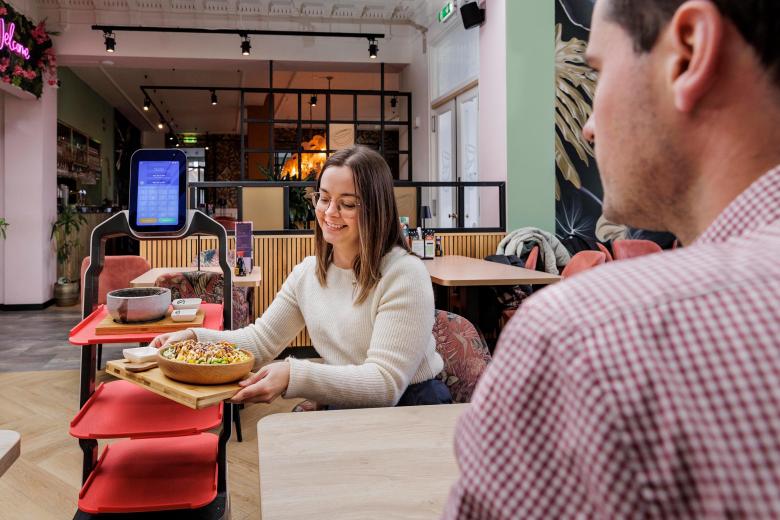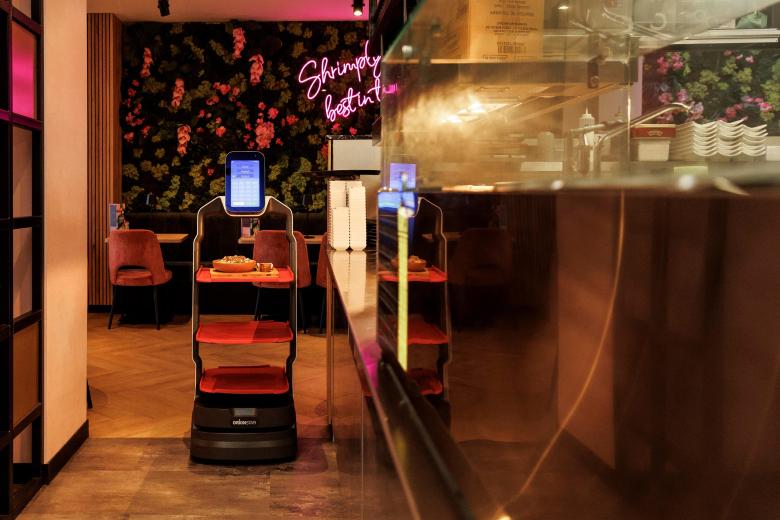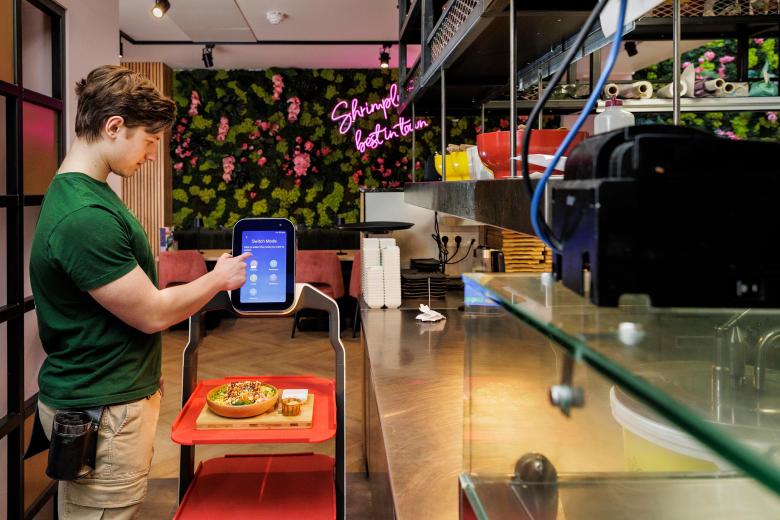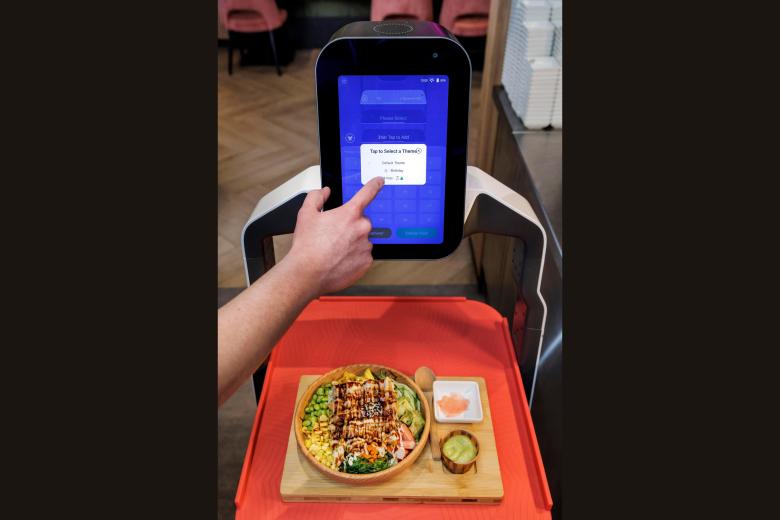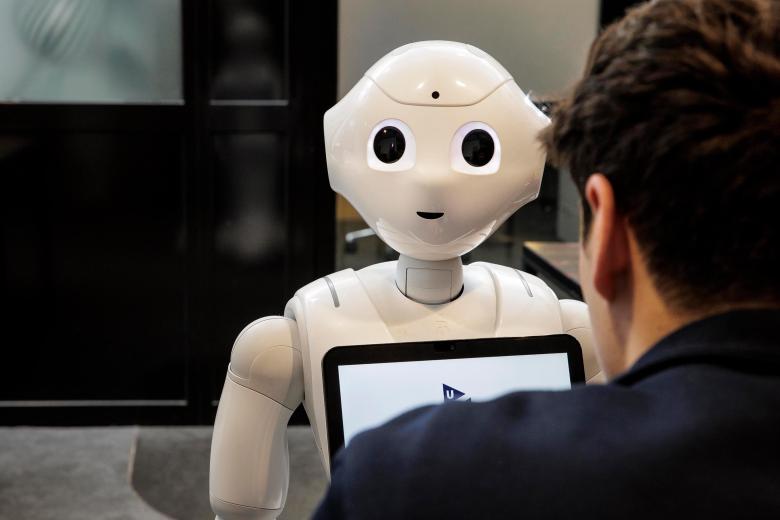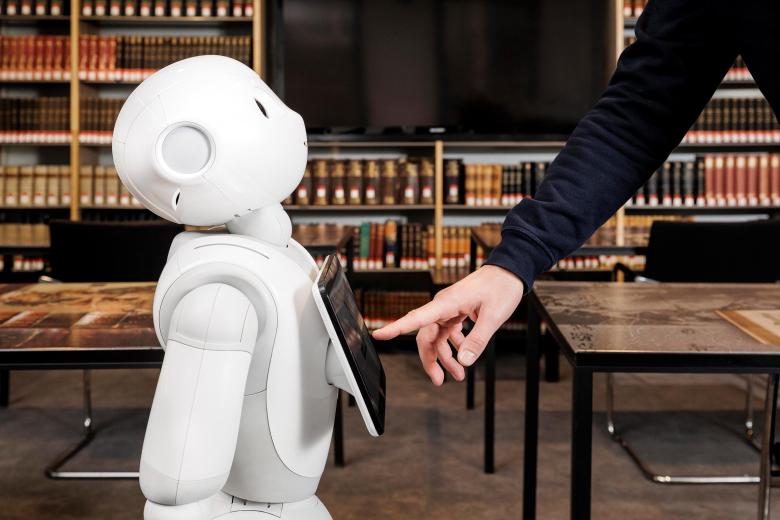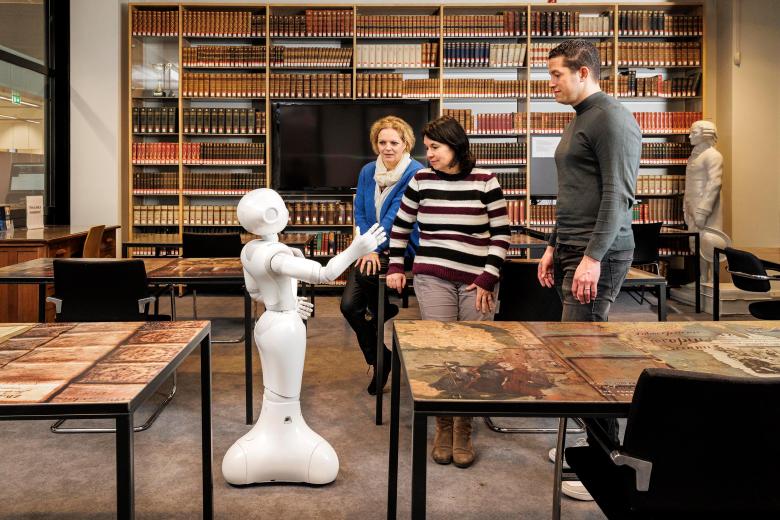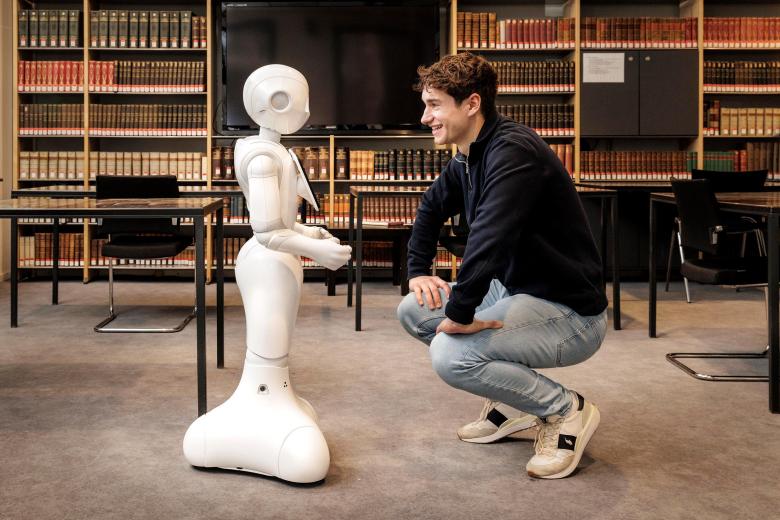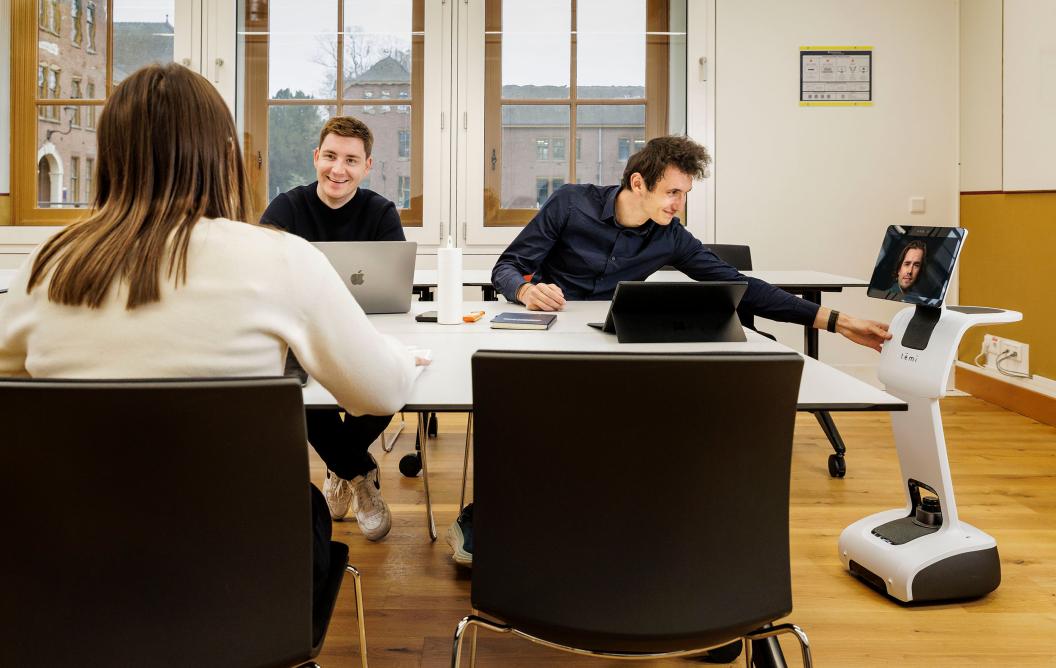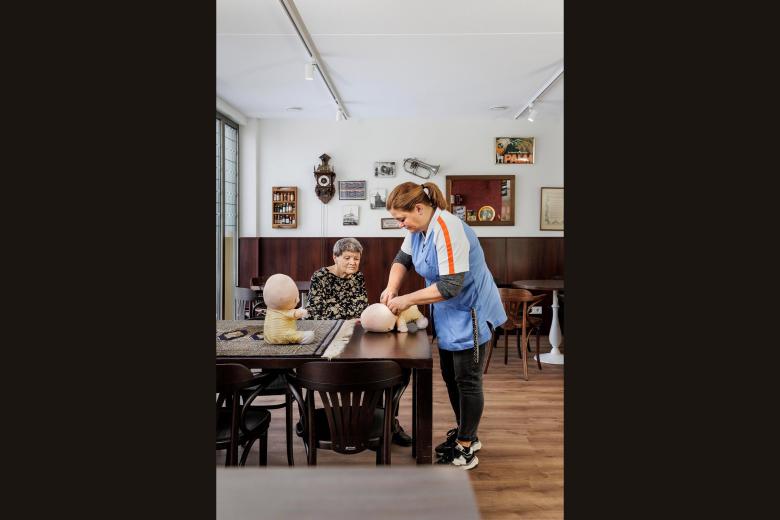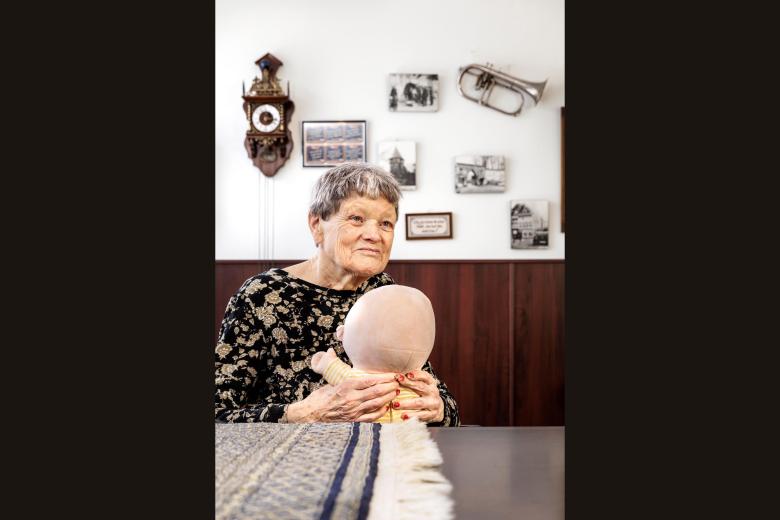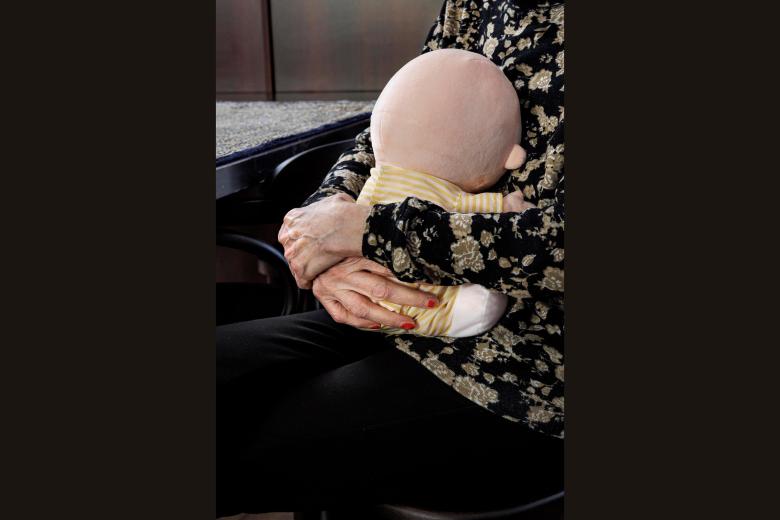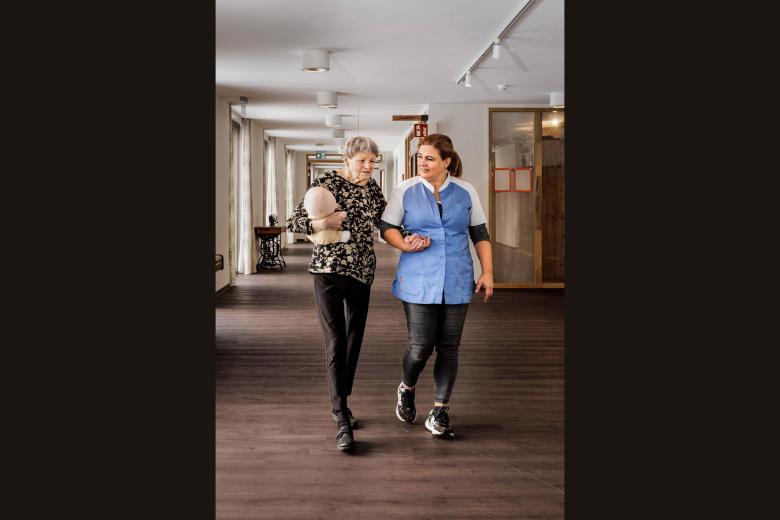The Maastricht Center for Robots
Picture a robot capable of responding to your inquiries, delivering your meal at a restaurant, or providing companionship in elderly long-term care facility. Today, this is not merely a futuristic fantasy. While it may initially seem mundane with limited value, the convergence of a well-developed business case and enhanced user experience could profoundly influence society
Professor Gaby Odekerken-Schröder, Prof. Dominik Mahr and their Maastricht Center for Robots team want to find out more about the effect that robots have on human behaviour. The research has now been running for several years and is making great progress. Gaby, Dominik and their team believe in a triple helix way of working, involving government, industry and university, in which partnerships between the university and other institutions are highly valued. As a result, tangible outcomes have already been attained through the implementation of many different robots across four separate organisations.
-
-
Dadawan
Yes, real robots help human workers to ensure fast service at Dadawan. And contribute to the well-being of staff and satisfaction of guests. The use of service robots fits with the Dadawan concept. Previously, staff were often too busy for a chat with guests. That was frustrating... With the help of the service robots, this is now a different story. The robots can deliver food and drinks to multiple guests at the same time, allowing staff more quality time for guests.
-
At Dadawan, they noticed that the robots certainly initially created a ‘wow effect’ among guests. Guests really tried to interact with the robots or wanted to take photos with them. By now, most guests have become accustomed to the presence of the robots, and the robots are truly part of the Dadawan team.
Click on the icon to watch all photos
Pepper
Pepper, the service robot, made its debut at the Inner City Library. Pepper is a physical robot designed for user interaction. Students have the opportunity to interact with Pepper by selecting the 'ask me a question' option on the screen, through which they can pose basic inquiries about the library and its services. These queries may span from simple questions like, "Where are the restrooms?" to more technical inquiries such as, "How do I connect to the Wi-Fi?"
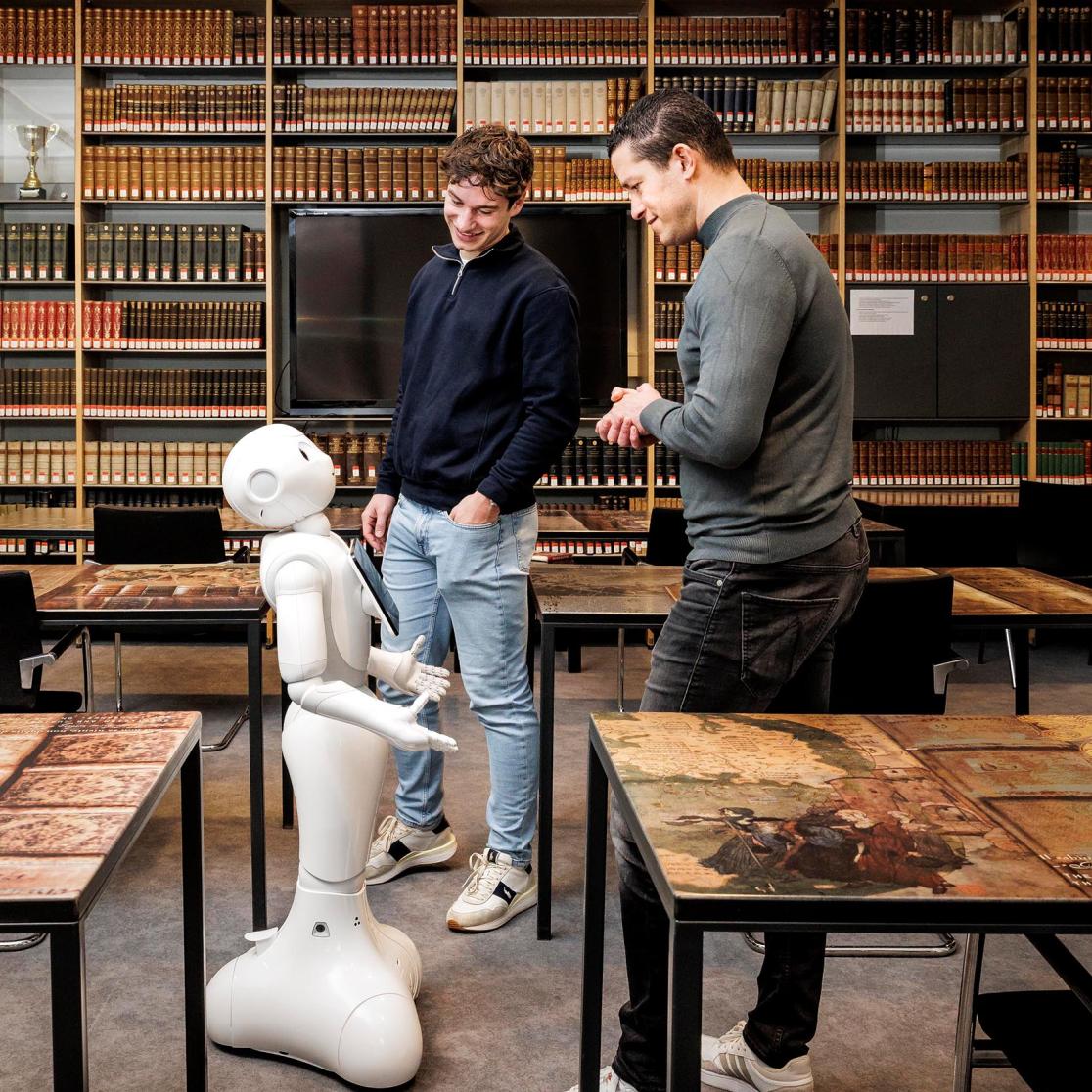
(Text continues below the photos)
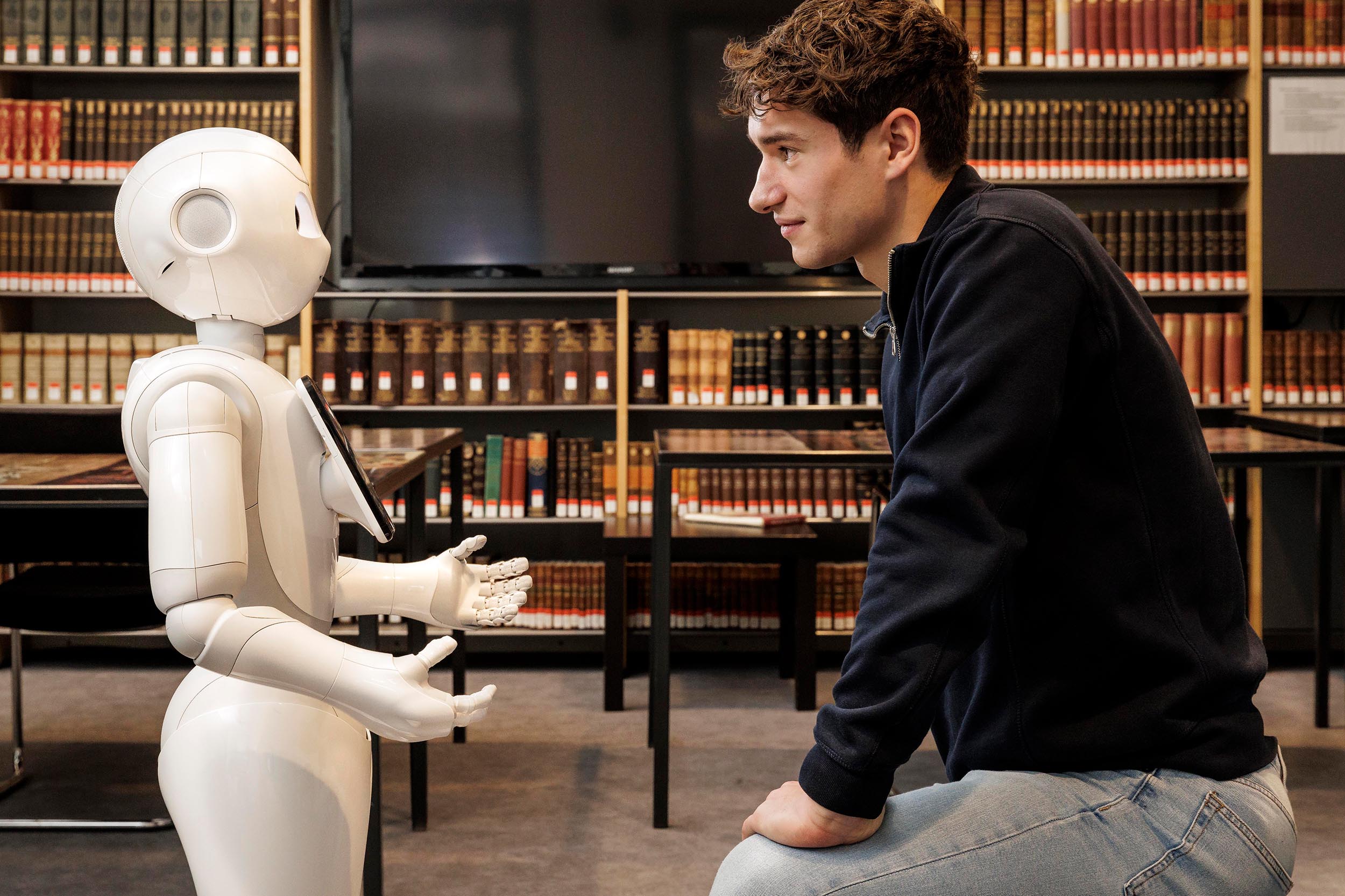
-
This initiative aligns with the vision of Maastricht University Library to establish a living lab, emphasising the integration of scientific research with active involvement from the UM community. The overarching goal of the project surrounding Pepper is to contribute to research aimed at enhancing the experience of visitors, particularly students and unburdening librarians allowing them to focus on content-related questions.
Click on the icon to watch all photos
-
Temi
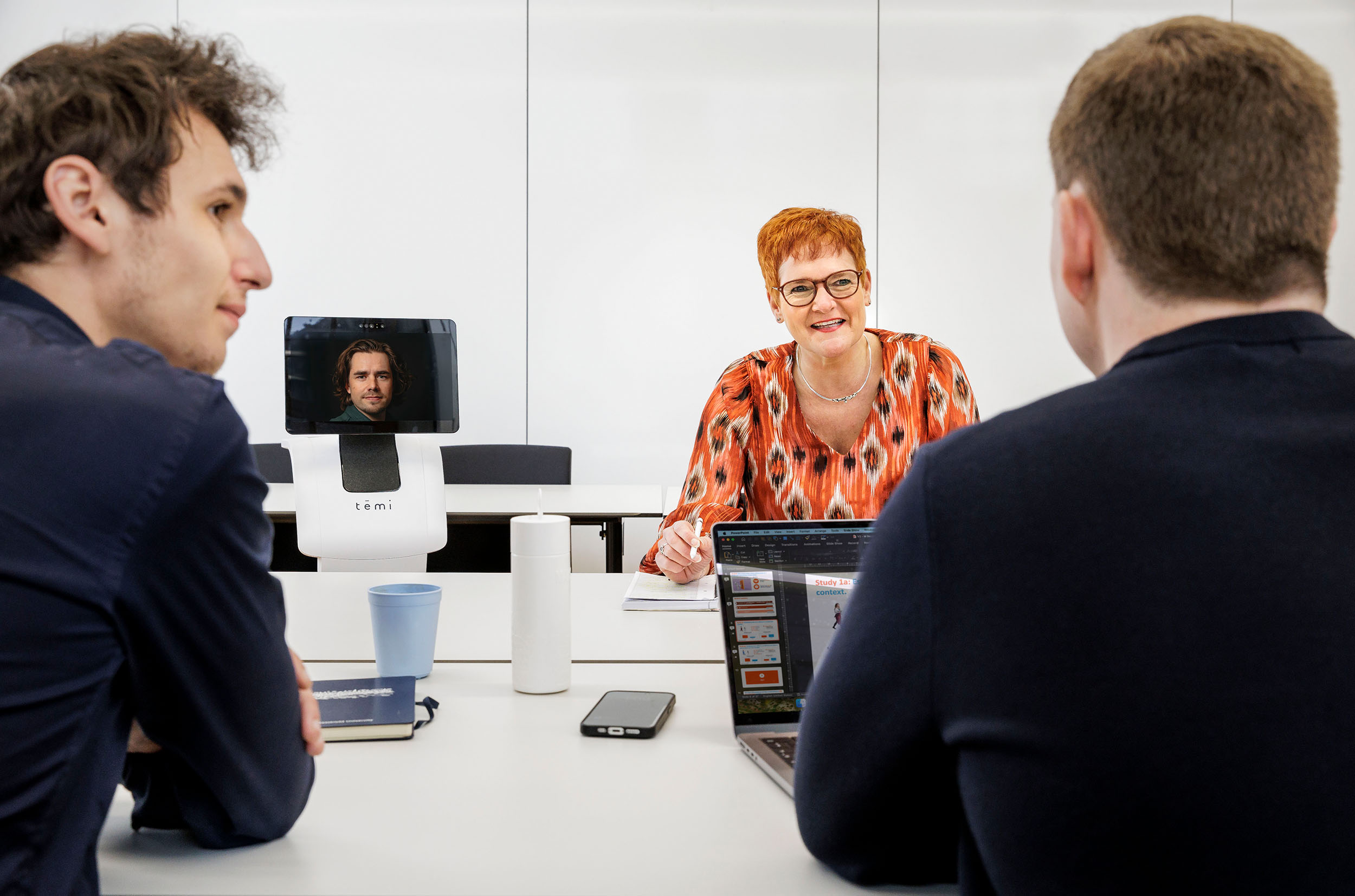
Telepresence robot Temi is able to represent online students and staff in the hybrid office or classroom! With Temi, colleagues or students who are not physically present can still participate in activities or meetings. Remote meetings or tutorial groups thus become significantly more accessible. Research has shown that Temi positively impacts the group dynamics, crucial in a PBL setting.
Especially in a time when hybrid working and studying is becoming increasingly common, Temi is very useful. With the help of Temi, a sense of physical presence is created, considerably enhancing the interaction with colleagues or fellow students who are present online.
-
HIRO
At Sevagram’s Campagne care facility, they have started using a small robot in the form of a baby to evoke feelings of care and comfort in people with advanced dementia. The robot has deliberately not been given a face. This is because people with a certain degree of dementia are able to project a face onto the robot themselves. In addition, the robot's interactivity and sounds vary so they do not always correspond to a fixed facial expression.

-
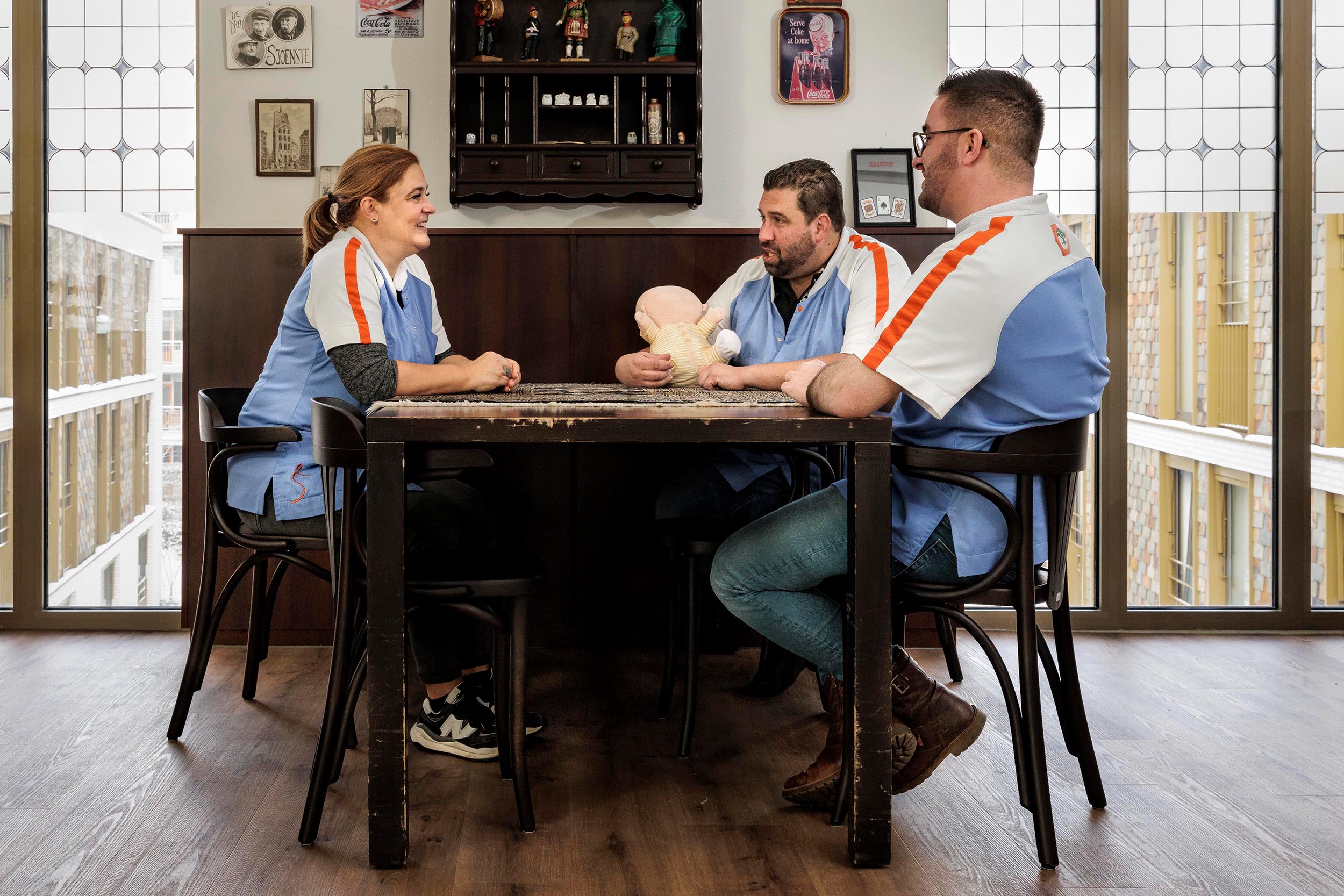
-
The small robot feels soft due to its plush covering, allowing older people to hold and cuddle it comfortably. The robot also encourages conversation and play among residents and between residents and staff. Because the robot looks like a baby, older people tend to bond with it more quickly. The moments with the robot are a highlight for the residents, providing relief and enjoyment throughout the day.
Click on the icon to watch all photos
-
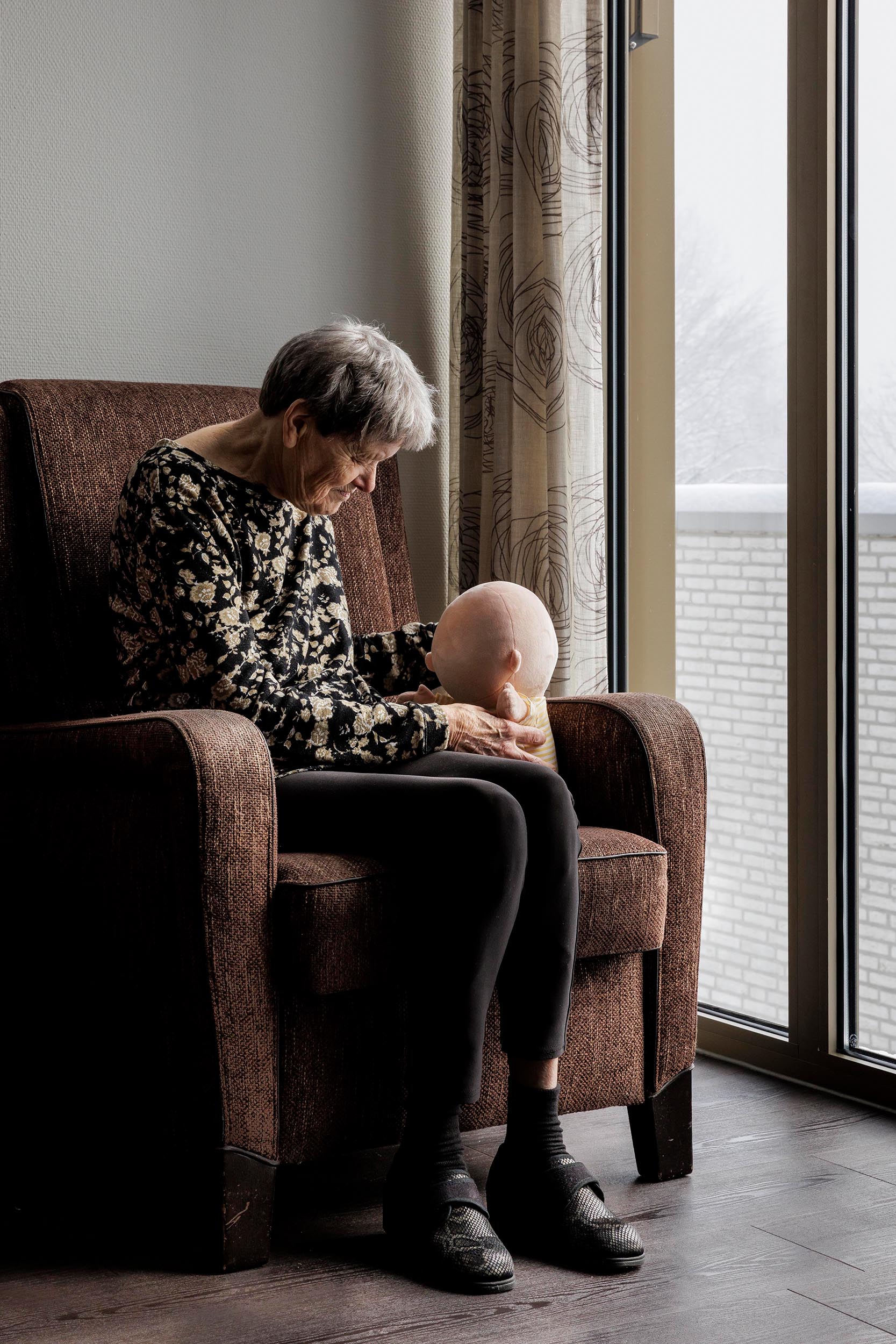
-
The MCR team
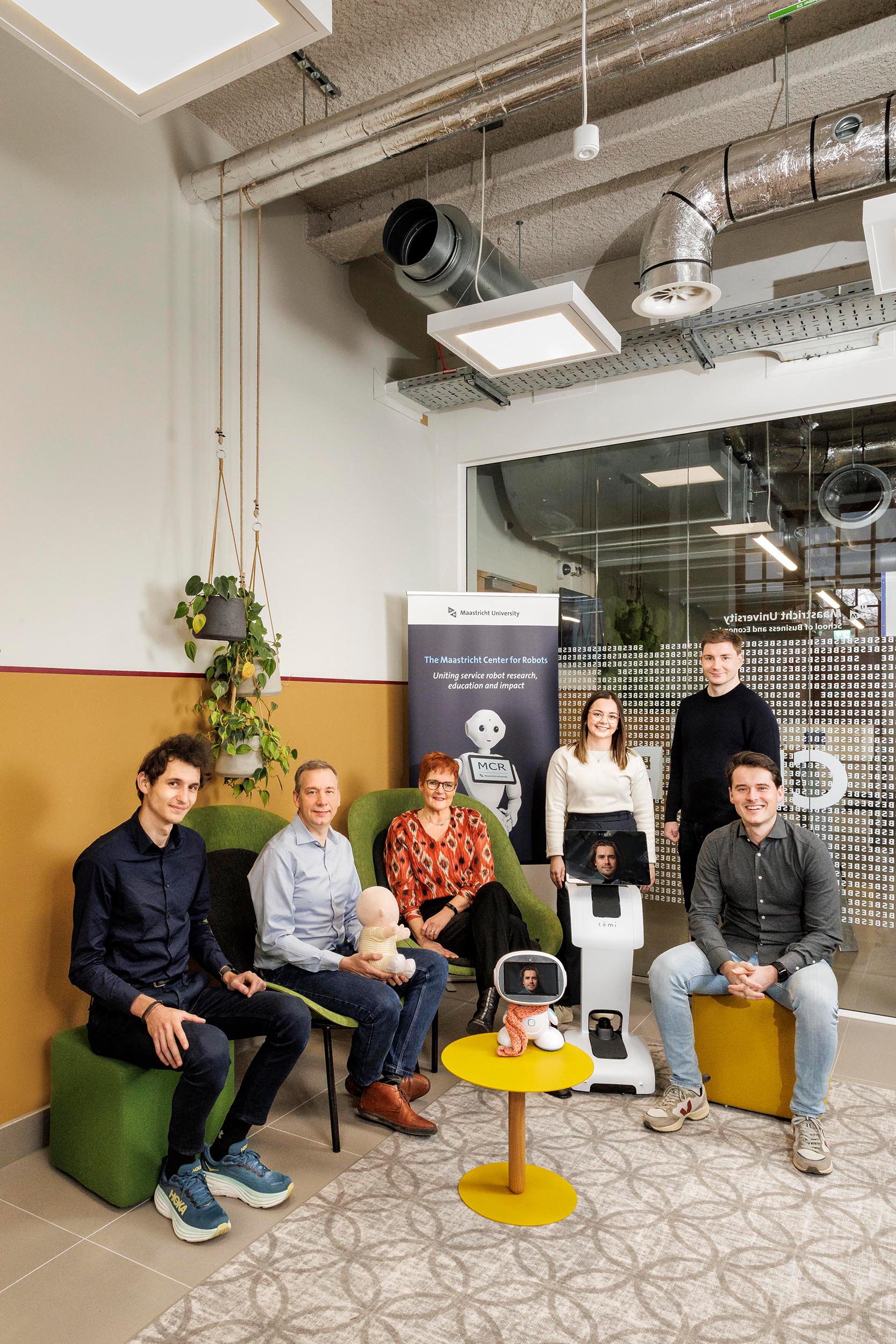
Where technology and people come together: Prof. Gaby Odekerken-Schröder, Prof. Dominik Mahr and their team alongside some of 'their' robots.
All photos: Paul van der Veer
Text: Sanne Handels
